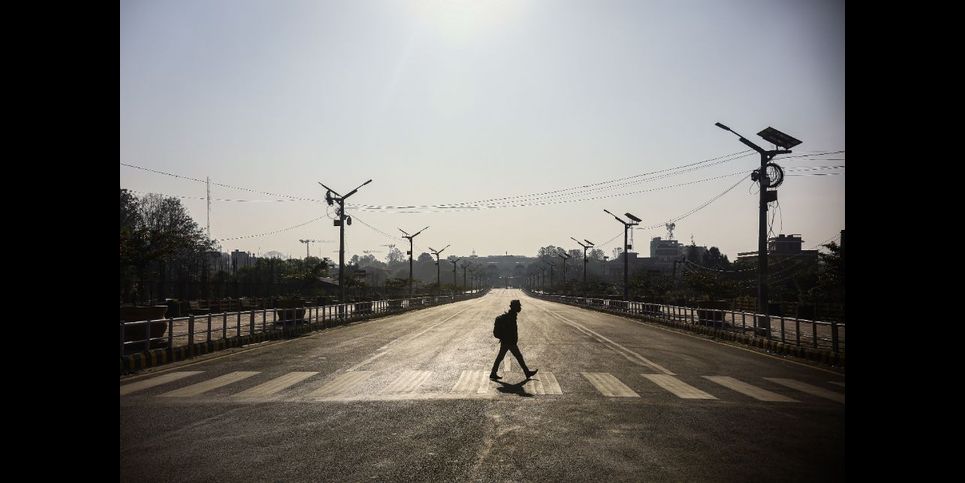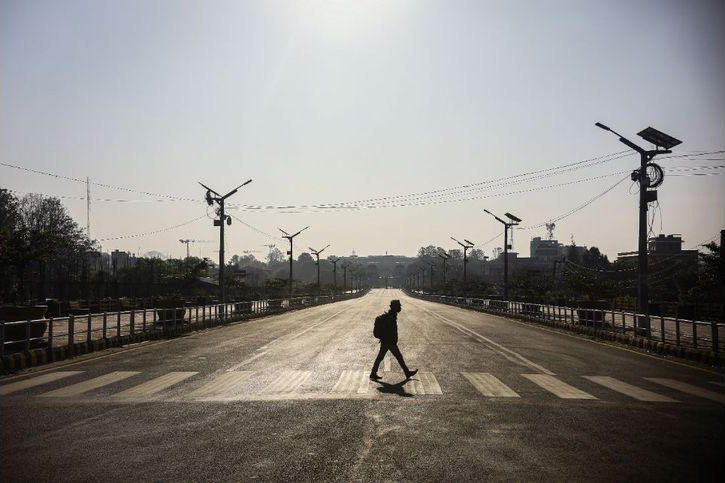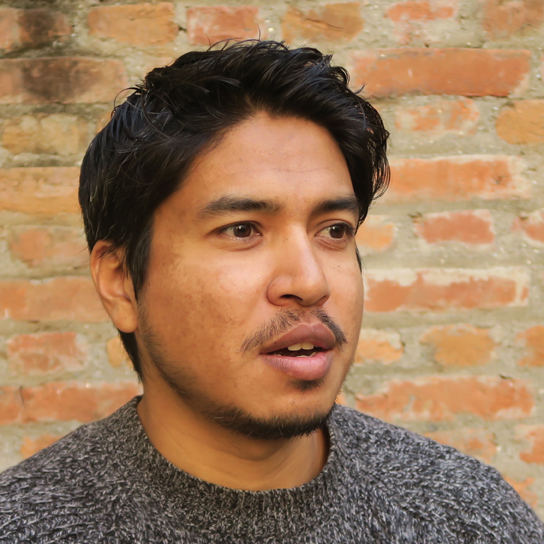What the city’s planners can learn from Jane Jacobs
The Covid-19 lockdown has given us an unprecedented opportunity to rethink our city and our priorities. Over the lockdown, restrictions on cars and motorcycles have returned some streets and alleys to what they had been for decades and centuries: community places for working, buying and selling, playing, and chatting. Although the change occurred owing to unfortunate reasons, we have recently enjoyed cleaner air and healthier lungs.
In the last decade or two, Kathmandu has aggressively embraced car-centered city planning by widening roads and building multilane highways. The city has become increasingly hostile to people, especially pedestrians and cyclists. Cars and motorcycles push aside everything else.
Cities around the world, however, are moving in the opposite direction: toward more walkable, cycleable cities with robust public transit. Kathmandu has implemented only a few small ventures in these directions. If we are not careful with post-lockdown planning, people will turn towards cars and motorbikes, instead of public transportation, adding to the vicious cycle of motorization. To prevent this, cities around the world are, in fact, reclaiming for pedestrians and cyclists road space from cars. Kathmandu should too.
Who was Jane Jacobs?
When we think about how we want our city to be, about how to balance competing priorities, perhaps no one comes to mind more often than the American urban thinker Jane Jacobs. Jacobs’s 1961 book, The Death and Life of Great American Cities, changed how we see cities and how we build them. Challenging urban-planning orthodoxies, Jacobs stressed four things that Kathmanduites could learn from: protecting a city’s individuality, making cities pedestrian-friendly, avoiding car-centered infrastructure, and planning from the bottom-up. Jacobs’s thinking is more relevant than ever, even in Himalayan cities far from her beloved New York.
Jacobs grew up in a modest family in a working class industrial town. She moved to New York City during the Great Depression in the 1930s, and worked for years as a journalist, writing about the nooks and crannies of the city she loved. In 1958, she wrote ‘Downtown is for People’ for Fortune magazine, a first draft for her famous 1961 masterpiece.
Not formally trained as an urban planner, Jacobs learned about how cities work from walking everywhere, carefully observing how neighbourhoods actually function, and how real people interact with the built environment. She studied the social and economic complexities of cities. She stressed on-the-ground reality, not abstract theory.
Cities for people, by people
Jacobs is known for several key ideas. For starters, she reminds us what makes a city great, what gives it magic: individuality, character, its unique history. She rejected cookie-cutter modernity. “From city to city the architects’ sketches conjure up the same dreary scene,” she complained. “Here is no hint of individuality or whim or surprise, no hint that here is a city with a tradition and flavor all its own.” That was crucial, showcasing what gave a city “a flavor all its own.” Kathmandu’s planners sometimes seem to forget this.
“Primarily created to expedite road-expansion and urban-development projects, it usually works in an authoritarian manner—avoiding community consultations, ignoring locality needs, and bypassing local government.”
She implored planners “to consider what makes a city center magnetic, what can inject the gaiety, the wonder, the cheerful hurly-burly that make people want to come into the city and to linger there.” She liked one section of San Francisco because it had “an irresistible sense of intimacy, cheerfulness, and spontaneity.”
Jacobs particularly despised projects that showed a “mania for obliterating a city’s individuality.” Instead, she wanted cities to be unique, surprising, and delightful.”‘Every downtown can capitalize on its own peculiar combinations of past and present, climate and topography, or accidents of growth.”
Second, Jacobs prioritized walkers, not drivers, and sidewalks and small streets, not big highways. “Downtown,” she stressed, “is for people.”
Pedestrians bring social and economic vitality to the city. The city without them would be dull, economically stagnant, and unsafe. “The pedestrian’s welfare is supreme,” she wrote.
Too much planning, she believed, has been for cars. Sidewalks are sacrificed for cars, partly because they are perceived for just pedestrian movement and building access. She, instead, recognized sidewalks as public spaces that bring people together. Pedestrians bring life to the city; street vendors and shopkeepers create economic vitality; children and street performers make the city lively. In fact, a great city is built by the people, not cars, going about their daily activities on the street.

Third, Jacobs decried how expressways for cars had eviscerated America’s great cities, disemboweled the close-grained intricacy of downtowns and neighbourhoods, and created lifeless sprawl. To think a city’s main problem was traffic and the main solution was widening roads and building expressways, she said, was not just wrong but destructive.
“Cities have more intricate social and economic concerns than automobile traffic,” Jacobs wrote. People prefer walking, but bad city planning forces them into cars. Instead, she wanted well-connected walking streets and efficient, comfortable public transport. The focus on cars suffocated public transport, making neighbourhoods less friendly to pedestrians. That was a recipe for killing cities.
During one epic battle, Jacobs fought against infrastructure projects that threatened to kill vibrant people-friendly neighbourhoods in New York. During the 1950s, Robert Moses, the powerful city planner who had already built several highways around New York, wanted a 4-lane highway through the historic Washington Square Park in Greenwich Village, in southern Manhattan. This was Jacobs’s own neighbourhood. Mobilizing the community and reaching out to the civic leaders and the media, she forced the city to drop the plan. It was the start of her civic activism and first defeat of Robert Moses’s expressway-centered vision.
Read also: The myth of a pro-poor leadership
Finally, it was not just the ‘what’ that Jacobs cared about, but also the ‘how.’ Jacobs revolutionized the process of city planning.
She emphasized community engagement in planning. Much of what planners need to know, she says, “they can learn from no one but the people of the place.’ In Death and Life, she stresses, “Cities have the capability of providing something for everybody, only because, and only when, they are created by everybody.”
Jacobs emphasized that planning on a grand scale, for the city ‘as a whole’, is often damaging. Good city planning should be “concerned with relatively small and specific interventions done here and there in specific streets, neighborhoods, and areas”. She resisted top-down structures such as commissions and authorities, which don’t comprehend the complexities of a locality. Instead, she proposed decentralized planning by empowered municipal bodies.
“The much bigger challenge is political: deciding for whom to design and whose interest to prioritize”
Here in Nepal, In 2012, instead of fixing the coordination inadequacies of already existing urban planning bodies, an autonomous Kathmandu Valley Development Authority was established. Primarily created to expedite road-expansion and urban-development projects, it usually works in an authoritarian manner—avoiding community consultations, ignoring locality needs, and bypassing local government. Jane Jacobs fought against such approaches.
Jane Jacobs has influenced generations of urbanists and shaped urban planning around the world. She pioneered the idea of city planning as a placemaking, where people reimagine and create their community space as public realm. Never before were people and democratic values as important in city planning.
Reimagining Kathmandu
Because of the Covid-19 pandemic, cities around the world are reimagining urban space and repurposing streets for the better. So should Kathmandu. Most importantly, we need to rethink how we create a healthy, inclusive, and equitable city.
This pandemic gives us an unprecedented opportunity to make the city more walker-friendly, including turning urban cores into pedestrian-only zones. Kathmandu Valley’s historic cores, with public spaces and alleys traditionally designed for people, are what makes this city unique. We need the city to invest in building wider sidewalks, safer cycle lanes, and convenient public transportation, not on widening roads and flyovers that benefit the wealthy few at the expense of many. City governments require an institutional setup to specifically oversee transport planning works, which is currently lacking.
Many Nepalis view walking and cycling as ‘low status,’ as being beneath cars. That needs to change. Walkable, cyclable cities are the cities of the future. The more walkable a city, the more vibrant its democracy. Transport policy should be about social equity as much as it is about mobility service, health, environment, and economy.
Technically, designing a people-friendly city is easy. The much bigger challenge is political: deciding for whom to design and whose interest to prioritize. Doing so requires understanding and political will—a will to pivot from the present modern car-centric approach to planning. City residents and the city government should understand that modernization is not always necessarily good.
The other challenge is the planning process—who makes the plans, how, and for whom. Right now, a tiny minority decides how we live and move in the city. Unless we make the policy-making and planning process fully democratic, it is impossible to imagine a city that works for everyone.
What’s extraordinary about Jane Jacobs’s ideas of city planning is her focus on ordinary urban concerns and people—what makes cities unique and vibrant and people-friendly, how sidewalks do more than just move pedestrians, and how good planning requires citizen input. Planners and policymakers who overlook these priorities risk big failures.
As Kathmandu embraces the same car-centric urban planning that the US rushed towards 60 years ago, Jacobs’s ideas and principles are more important than ever.



